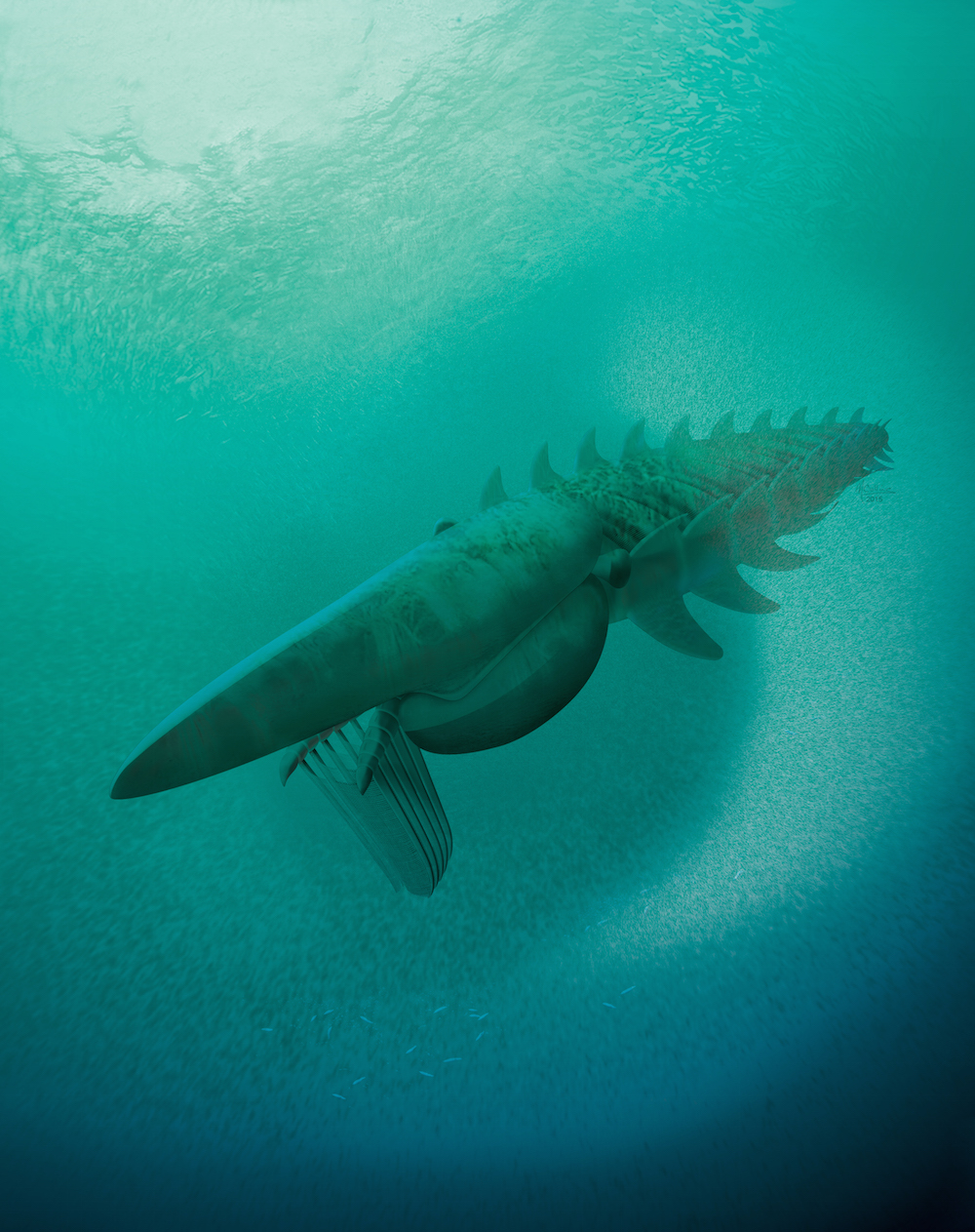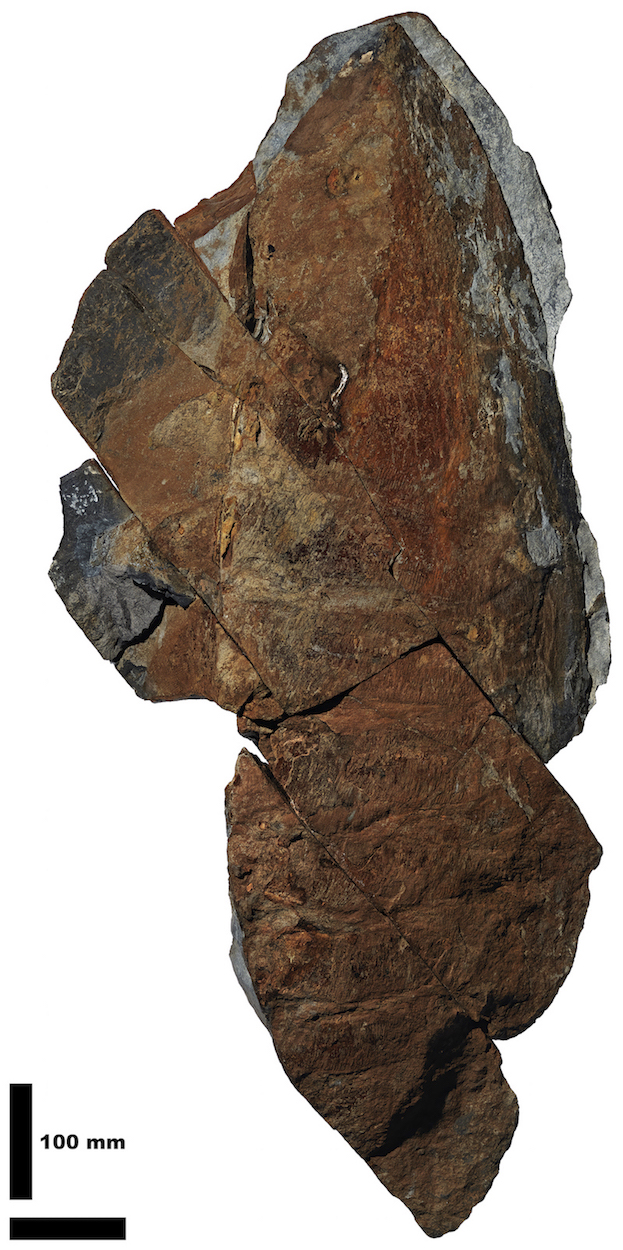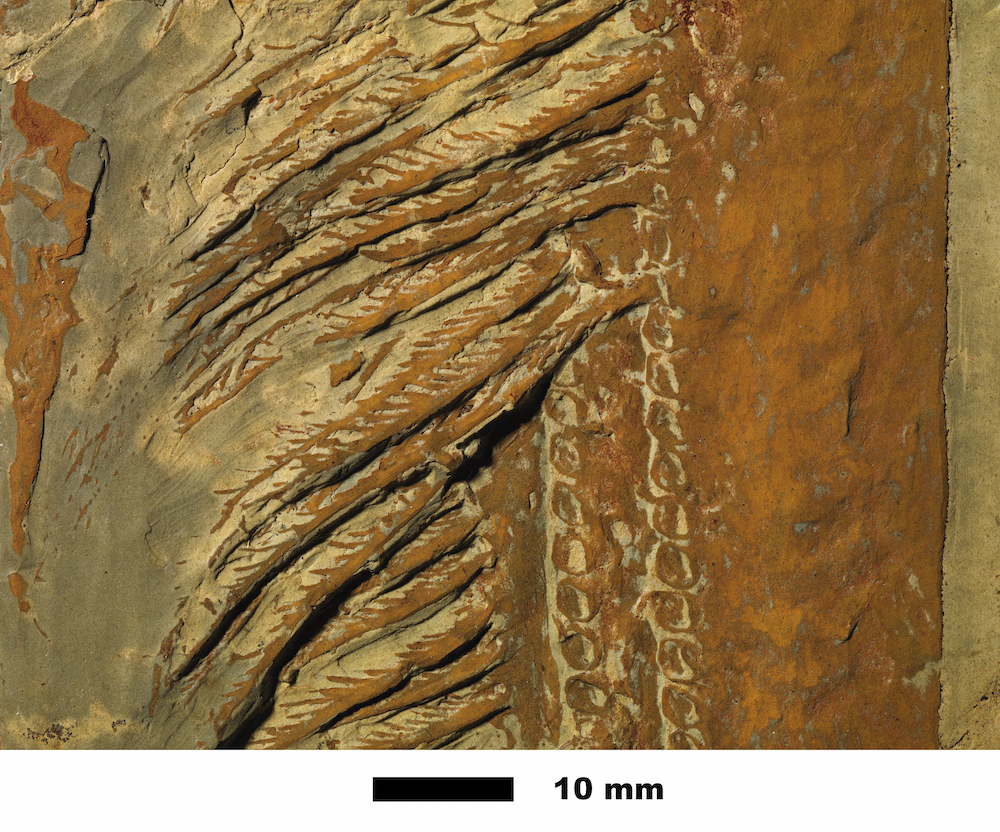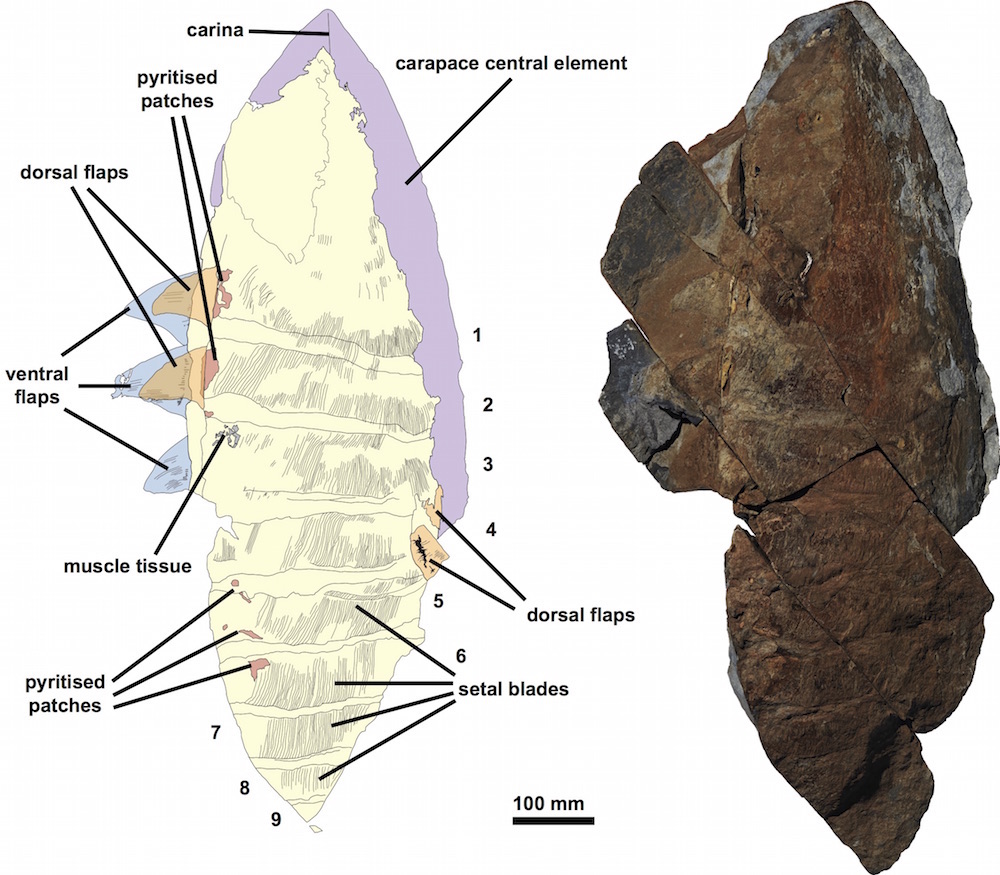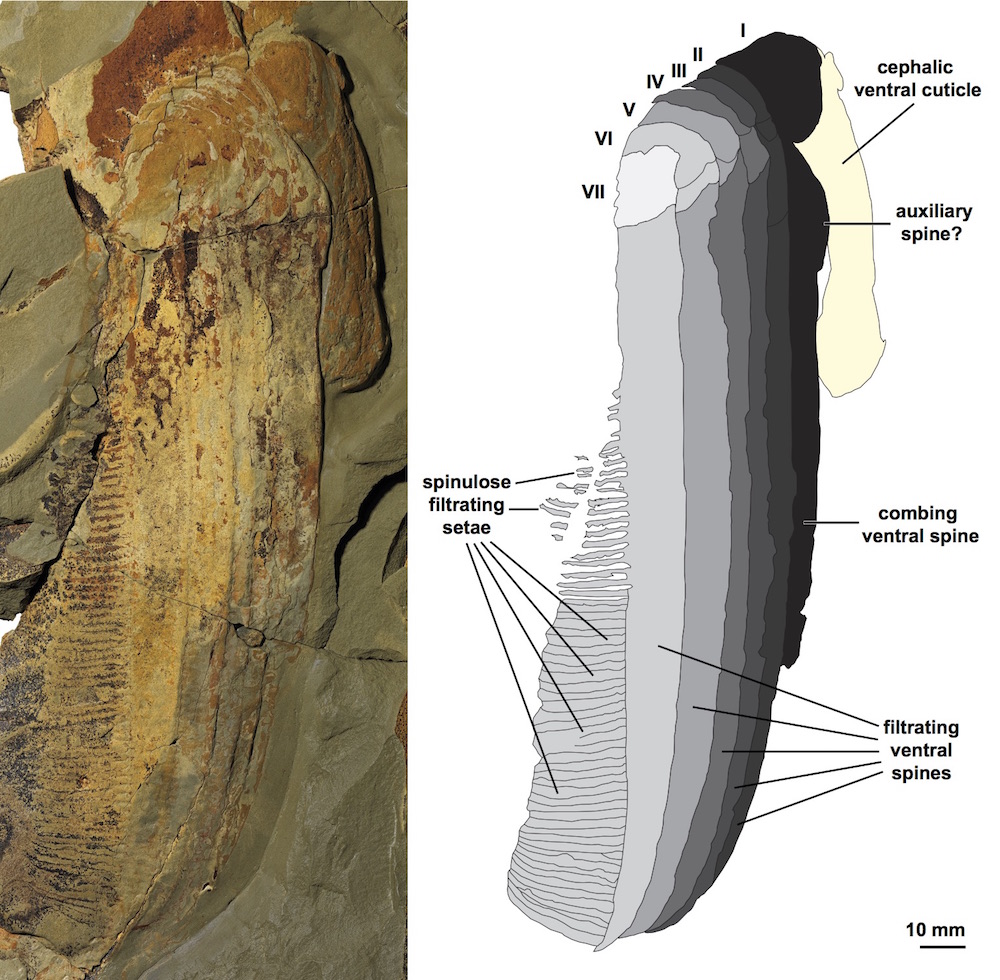Photos: Ancient Sea Monster Was One of Largest Arthropods
A remarkably well-preserved fossil of a 480-million-year-old sea monster is helping researchers understand the evolution of arthropods. The creature, an anomalocaridid, has not one but two sets of legs on each of its body segments, showing that it's an ancestor of modern-day arthropods, which include arachnids, insects and crustaceans. [Read the full story on the ancient anomalocaridid found in modern-day Morocco]
Filter feeder
Here's an illustration of the anomalocaridid (Aegirocassis benmoulae), a giant filter feeder that ate plankton and lived in the Early Ordovician period about 480 million years ago. The animal measured about 7 feet (2 meters) long, and is one of the largest arthropods that ever lived.
Despite its size, A. benmoulae was a gentle giant, said John Paterson, an associate professor of paleontology at the University of New England in Australia, who was not involved in the study.
"Its feeding appendages [were] built for filtering plankton, not grasping prey," he said. "This is in contrast to older [anomalocaridid] species, some of which are interpreted to be the apex predators of their time."
(Image credit: Marianne Collins, ArtofFact)
Rock solid
Get the world’s most fascinating discoveries delivered straight to your inbox.
This is a dorsal view of the A. benmoulae fossil that preserved the 3D remains of the animal. After washing the specimen, researchers found two sets of lateral flaps, which gave them critical new insights on the origins of modern arthropod limbs. (Photo credit: Peter Van Roy, Yale University)
Sideways view
This is another view of the fossil that preserved the animal in three dimensions. Researchers have studied the anomalocaridid's anatomy since the 19th century, but the new findings are the first to point out the creature's second set of limbs. (Photograph by Peter Van Roy, Yale University; drawing by Allison C. Daley, University of Oxford)
Detailed net
This intricate filter-feeding net allowed A. benmoulae to feed on plankton and other organisms floating in the ancient ocean near modern-day Morocco.
The animals have a peculiar anatomy, researchers said.
"I like to describe anomalocaridids as being like a mutation experiment gone wrong," Paterson told Live Science. The animal looks like a cross between a mantis shrimp, a cuttlefish and a baleen whale, he said.
"The head is very whalelike in being rather large and elongate, and with long, bristlelike appendages underneath," he said. "The body is segmented — as in most arthropods, such as shrimp and lobsters — and the series of flaps along the sides are reminiscent of the fins of modern cephalopods, like cuttlefish, that aid in swimming."
(Photograph by Peter Van Roy, Yale University; drawing by Allison C. Daley, University of Oxford)
Dinnertime
This is a close-up of the complex feeding apparatus that the anomalocaridid used to feed. Unlike the recently found species, earlier marine anomalocaridids hunted for prey and were at the top of the food chain during the Cambrian period, about 500 million years ago. (Photo credit: Peter Van Roy, Yale University)
Extreme examination
This image shows a dorsal view of the fossil alongside a drawing of the specimen. Note the double set of lateral flaps — a discovery that researchers overlooked in previous anomalocaridid fossils.
"Until now, paleontologists have thought that these 'primitive' arthropods had one set of flaps on each side, which could not be easily reconciled with our understanding of the anatomy of true arthropods," Paterson said.
(Photograph by Peter Van Roy, Yale University; drawing by Allison C. Daley, University of Oxford)
Long filter
This image shows the complete filter-feeding appendage alongside an illustration. The drawing notes the ventral spines on the net. Modern-day animals that filter feed include whales and sponges. (Photograph by Peter Van Roy, Yale University; drawing by Allison C. Daley, University of Oxford)
Follow Laura Geggel on Twitter @LauraGeggel. Follow Live Science @livescience, Facebook & Google+.

Laura is the managing editor at Live Science. She also runs the archaeology section and the Life's Little Mysteries series. Her work has appeared in The New York Times, Scholastic, Popular Science and Spectrum, a site on autism research. She has won multiple awards from the Society of Professional Journalists and the Washington Newspaper Publishers Association for her reporting at a weekly newspaper near Seattle. Laura holds a bachelor's degree in English literature and psychology from Washington University in St. Louis and a master's degree in science writing from NYU.


